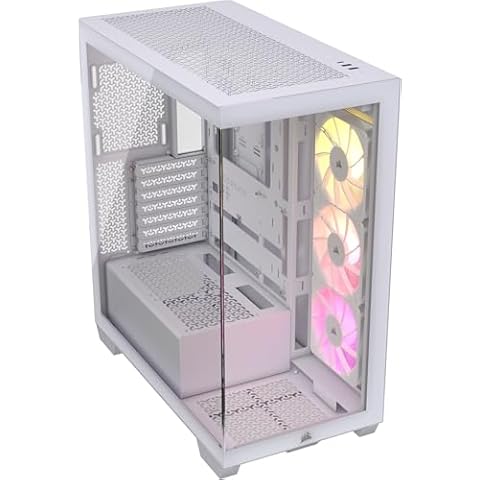What You Need to Know About Computer Cases
Introduction
When it comes to building a new computer, the case is often an afterthought. Many people choose whatever case is cheapest or happens to be on sale at the time. However, the case is an important component of any computer and should be chosen carefully. In this article, we'll explore the various factors to consider when choosing a computer case and provide some tips for making the best choice.
Form Factor
The first thing to consider when choosing a computer case is the form factor. This refers to the size and shape of the case and will determine what type of motherboard and other components can be used. The most common form factors are ATX, microATX, and miniITX.
ATX is the largest and most versatile form factor. It supports the widest range of motherboards and allows for the most expansion options. If you want the most flexibility and potential for future upgrades, ATX is the way to go.
MicroATX is a smaller version of ATX and is suitable for most users. It still supports a wide range of motherboards and allows for some expansion options. If you're building a medium-sized desktop computer and don't need a lot of expansion options, microATX is a good choice.
MiniITX is the smallest form factor and is suitable for building small and compact computers. It supports only the smallest motherboards and has very few expansion options. If you're building a small HTPC (Home Theater PC) or a basic office computer, miniITX is worth considering.
Cooling
Another important factor to consider when choosing a computer case is cooling. Proper cooling is essential for maintaining the health and longevity of your computer's components. Most cases come with one or more fans pre-installed, but you may want to consider adding additional fans or even a liquid cooling system if you're building a high-performance computer.
The number and placement of fan mounting points is an important consideration when it comes to cooling. A case with more fan mounting points allows for more flexibility in terms of fan placement and can provide better airflow.
In addition to the number of fan mounting points, you should also consider the size of the fans that can be used. Larger fans can move more air and can be more effective at cooling, but they may be louder.
Build Quality and Design
When it comes to build quality and design, there are many factors to consider. The material the case is made of can affect its durability and weight. Steel is the most common material used for computer cases, but aluminum and even plastic cases are also available.
The design of the case can also affect its usability and functionality. Some cases are designed with easy access to the interior, making it easier to install and upgrade components. Others are designed for maximum airflow and cooling performance.
Price
Of course, price is always a factor when it comes to purchasing a computer case. There is a wide range of prices available, from budget cases that cost less than $50 to high-end cases that cost several hundred dollars. In general, you get what you pay for when it comes to computer cases, so it's important to balance your budget with your needs and preferences.
Conclusion
Choosing a computer case is an important decision that should not be taken lightly. The form factor, cooling, build quality and design, and price are all factors to consider when making your decision. By carefully considering each of these factors, you can choose the right computer case for your needs and ensure that your computer runs smoothly and reliably.











